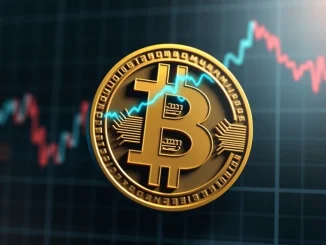
The world of finance is constantly evolving, and few developments are as significant as the intersection of traditional institutions and blockchain technology. When a financial giant like Goldman Sachs makes a move in the digital asset space, the industry pays close attention. This is precisely the case with their latest announcement regarding **Goldman Sachs tokenization** efforts, specifically aiming for round-the-clock trading of tokenized assets.
What Did Goldman Sachs Announce About Tokenized Treasuries?
At the recent TOKEN2049 conference held in Dubai, Mathew McDermott, the Global Head of Digital Assets at Goldman Sachs, shared insights into the firm’s ambitious plans. According to reports from CryptoSlate, a key objective is to facilitate 24/7 trading for assets like U.S. Treasuries and shares in money market funds once they are tokenized. This move represents a significant step towards bridging the gap between traditional financial markets and the always-on nature of the digital asset world.
Traditionally, trading certain assets like Treasuries is limited to specific market hours. Tokenization, the process of representing real-world assets on a blockchain, has the potential to eliminate these constraints, enabling trading around the clock, every day of the year. This could dramatically increase liquidity and accessibility for these assets.
Beyond Treasuries: What Other Tokenization Initiatives Are Planned?
Goldman Sachs isn’t stopping at just **tokenized Treasuries**. McDermott also revealed plans to roll out three distinct tokenization initiatives within the current year. While specific details on all three are still emerging, two notable projects were highlighted:
- Their first tokenized U.S. investment fund.
- A euro-denominated digital bond.
These initiatives signal a broader strategy by Goldman Sachs to explore and implement blockchain technology across various asset classes and geographies. Moving investment funds and bonds onto a digital ledger could streamline issuance, trading, and settlement processes, offering potential cost savings and efficiency gains.
Why is 24/7 Trading Crypto and Digital Assets Important for Institutions?
The concept of **24/7 trading crypto** markets is standard for native digital assets like Bitcoin and Ethereum. However, applying this continuous trading model to traditional assets like Treasuries via tokenization brings several advantages for institutional players:
- Increased Liquidity: More trading hours mean more opportunities to buy and sell, potentially tightening spreads and improving price discovery.
- Global Accessibility: Investors in different time zones can trade without waiting for traditional market opens.
- Reduced Counterparty Risk: Blockchain-based settlement can potentially reduce the time between trade execution and final settlement, mitigating risk.
- Operational Efficiency: Automated processes on the blockchain can reduce manual work and potential errors associated with traditional systems.
This push towards continuous trading for tokenized traditional assets underscores the growing belief among major financial players that blockchain technology can fundamentally improve market infrastructure.
How Does This Fit into the Trend of Institutional Digital Assets Adoption?
Goldman Sachs’ announcement is a clear indicator of the accelerating trend towards **institutional digital assets** adoption. Major banks and financial institutions are no longer just observing the blockchain space; they are actively building infrastructure and launching products. This includes everything from offering crypto custody services to exploring the use of distributed ledger technology (DLT) for clearing and settlement.
The focus on tokenizing real-world assets like Treasuries and funds is particularly significant. It shows that institutions see value in leveraging blockchain’s capabilities not just for cryptocurrencies, but for improving the efficiency and functionality of existing financial markets. This institutional embrace lends credibility to the technology and paves the way for wider adoption across the financial ecosystem.
What Does This Mean for the Future of Blockchain Finance?
The move by Goldman Sachs to enable 24/7 trading for **blockchain finance** assets like tokenized Treasuries highlights a potential future where traditional and digital markets converge. We could see a landscape where assets are issued and traded on interconnected blockchain networks, offering unprecedented speed, transparency, and accessibility.
While challenges remain, including regulatory clarity, interoperability between different blockchain platforms, and achieving widespread network effects, the commitment from a firm like Goldman Sachs signals strong momentum. Their efforts, alongside those of other financial leaders, are actively shaping the future of how assets are owned, traded, and managed globally.
Conclusion
Goldman Sachs’ ambition to enable 24/7 trading for tokenized Treasuries and funds, alongside their planned tokenization initiatives, marks a pivotal moment in the convergence of traditional finance and blockchain technology. This move towards continuous trading for traditional assets, powered by tokenization, promises increased liquidity and global accessibility. As institutional digital assets adoption continues to grow, led by firms like Goldman Sachs, the potential for blockchain finance to reshape market infrastructure becomes increasingly clear. While the path forward involves navigating regulatory and technical complexities, the commitment from major players signals a transformative era for global finance.



